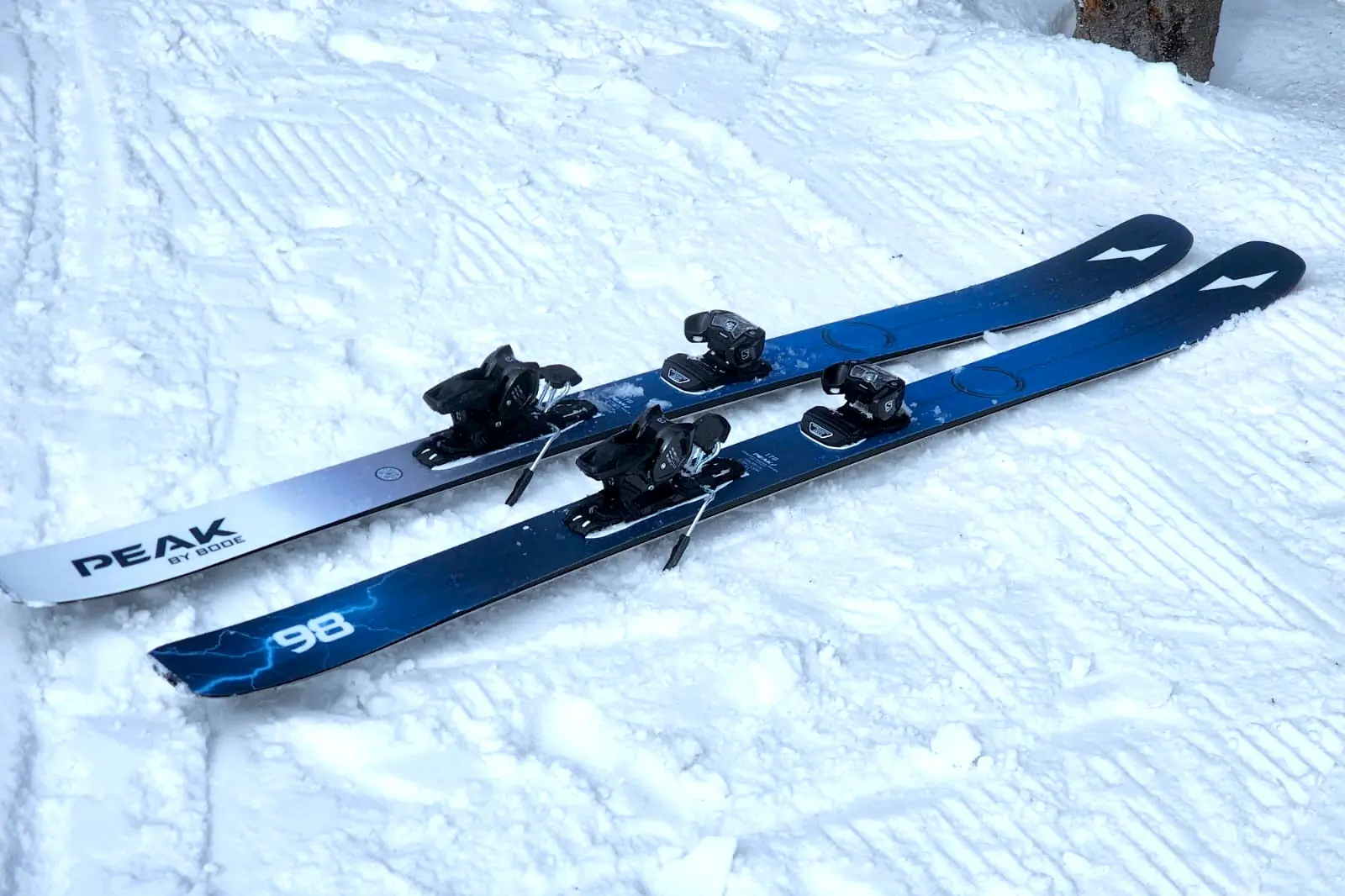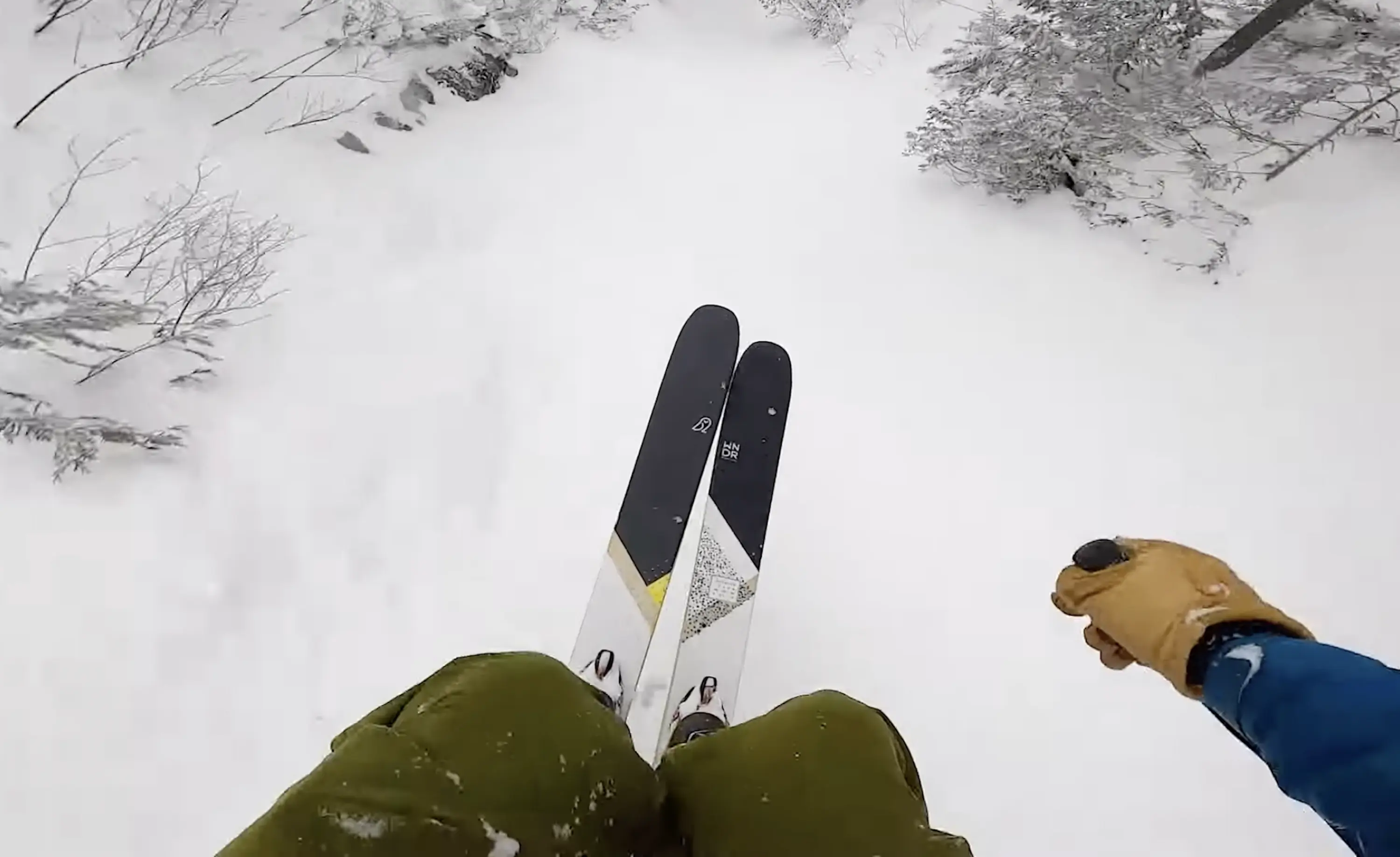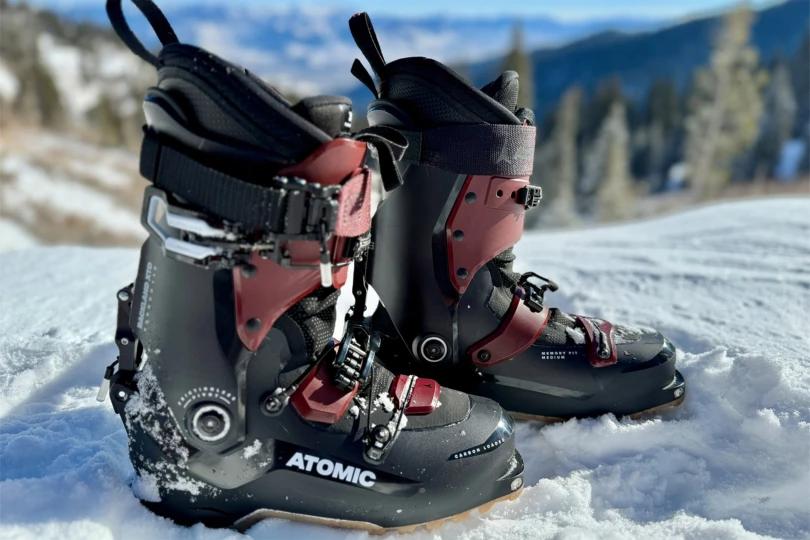When I clicked into the understated Peak 98 skis and hit the slopes at Stowe, Vt., I was taken aback at their tenacious hold in challenging conditions. But it wasn’t until I skied them in Idaho powder that I truly understood the depth of their versatility.
A lot of skis claim to be all-mountain skis, but many of them tend to slip and skid when the conditions get icy and hardpacked. But unlike those, the Peaks 98 by Bode delivers on its “all-mountain” promises. Whether I was on chalky groomers, refrozen mank, or in deep powder, this ski carved, floated, and helped me have an awesome day every time I was on it.
Since I started riding the Peak 98s 2 months ago, they’ve become the skis I reach whenever I’m not sure what the ski day will deliver. I like this ski so much, the rest of my quiver has been getting dusty in my garage. And when I packed skis for a trip to Idaho, which had snow in the forecast but not a lot on the ground, this is the one I chose.
In short: The Peak 98 is uniquely suited to navigating variable East Coast conditions that often include a solid dose of slick, frozen, hardpack, and corduroy. This ski can carve through chunky manmade snow without getting overwhelmed by the fresh stuff — even when it’s deep. They are relatively stiff. But they ski like they’re much softer thanks to Peak’s proprietary KeyHole Technology used in the core’s construction. For anyone who rides on a lot of ice, they’re a great option.
To compare the Peak 98 by Bode to other all-mountain skis, check out GearJunkie’s guide to the Best All-Mountain Skis.
- Weight: 1,918 g/ski (178)
- Shovel: 128 mm
- Waist: 98 mm
- Tail: 116 mm
- Available in: 160, 168, 178, 184, 190 mm
Peak Ski Peak 98 by Bode: Review

Peak Skis is former pro skier Bode Miller’s brand that he launched in 2022. He’s teamed up with another ski industry legend, big mountain skier and mountaineer Chris Davenport.
The Peak 98 is the perfect expression of the brand’s goal of creating skis that are “light enough but not too light.”
This was one of the few skis that I felt I could ski with confidence on any day of the season at any East Coast resort. I never worried that I’d be slipping sideways down the hill when I attempted to edge and turn. The Peak 98 doesn’t get pushed around when you hit a chunk of ice, refrozen mank, or detritus on the trail from poor snowmaking — all common East Coast skier experiences.
The tip deflects chunks, and it doesn’t chatter often. But it’s still flexible enough that when I hit a bump run or dipped into Stowe’s sidecountry Angelfood zone, I could carve, wiggle, and cruise between tight trees in fresh snow, and over skied-off traverses.
Peak Skis’ Secret Sauce: KeyHole Technology
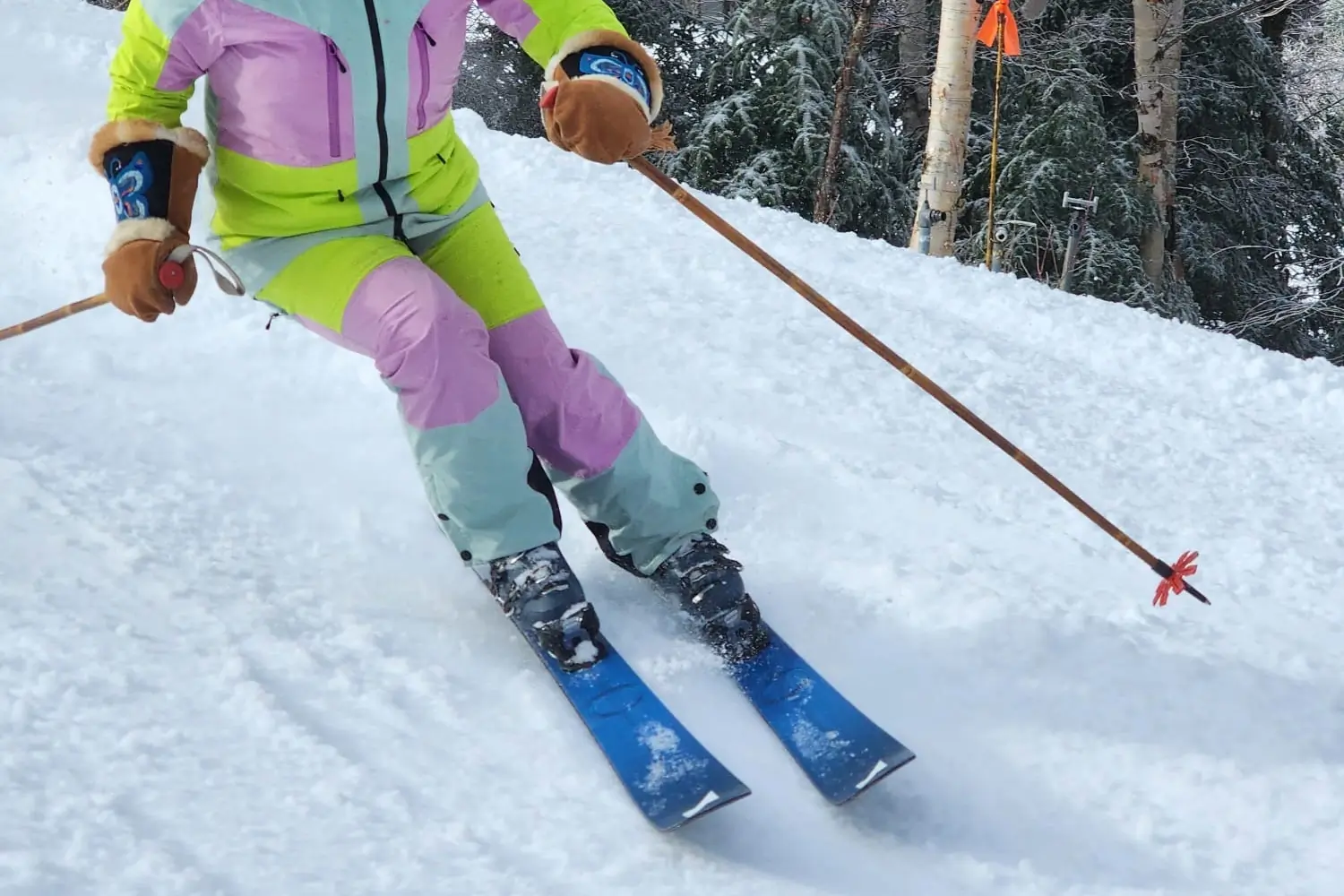
Peak builds its skis with two sheets of metal sandwiching a paulownia and ash core. Between the ash and the metal, these skis are pretty heavy and stiff. But that’s not how they ski. Thanks to Peak’s signature KeyHole Technology, they feel like a much lighter and flexier ski.
KeyHole Tech uses partial metal sheets, with an oval cut into the top sheet of metal. That makes it easier to initiate turns without compromising this ski’s tenacious grip. That oval cutout helps the Peak 98 track better in softer snow and untracked sidecountry snow. It lets the skis articulate around bumps, whether they’re frozen or soft. It also helps the tip float when there’s natural snow on the trails.
First Impressions
Picking these skis up, they felt frontside ski-solid. But they weren’t so heavy that I felt like they would be tiring to move through a day of carving. The graphics are pleasant, but they aren’t flashy.
I first clicked into these skis with my alpine Tecnica Mach 1 120 on a low-tide, groomer-only day at Vermont’s Stowe Resort, hoping I hadn’t made a judgment error. I knew the manmade snow would get scraped off in a few runs. Then I’d want a ski that I could edge on ice with.
On my first run, the skis felt responsive, carvey, and fun. By my sixth run, they were still holding tight whether I had them fully on edge or was skiing them more gently.
Note: For 2024/25, the Peak 98s come with a built-in tracking device to help you find your skis on the rack, when one gets lost in the snow, or when the airline ships them to Antigua, not the Alps. The skis I tested didn’t have this feature.
East Coast Chops




I haven’t met another all-mountain ski that felt like it was so well suited to East Coast skiing. The Peak 98 was easy to get on edge, and it carved confidently when I was skiing.
It also dug in when I was pushing it hard, letting me speed through the arc of my turns with the throttle open. The ski always went where I pointed it. Its edge control was excellent. And while a true frontside carving ski, like a Volkl Kendo 88 or a Stokli Montero AR, or even the Peak 78 or 88 by Bode, will be the ultimate trenching frontside carver, this ski could bounce between different conditions. It was fun everywhere I took it.
I often dread bumps, even on my best ice-gripping skis. The tips are usually so stiff that bumps just aren’t fun. On “ice-coast” days, I usually default to my Armada Declivities, but those skis are a one-trick pony. They claw into variable conditions, which is great. But I hate taking them down bump runs or tree runs.
The Peak 98’s tips had zero chatter. They flexed around bumps and let me playfully scamper between tight trees. This ski made me feel like the queen of the hill wherever I went. It gave me the confidence to ski ridiculously fast on any slope, and I could bounce in and out of the woods without regretting what I had on my feet.
In the Field
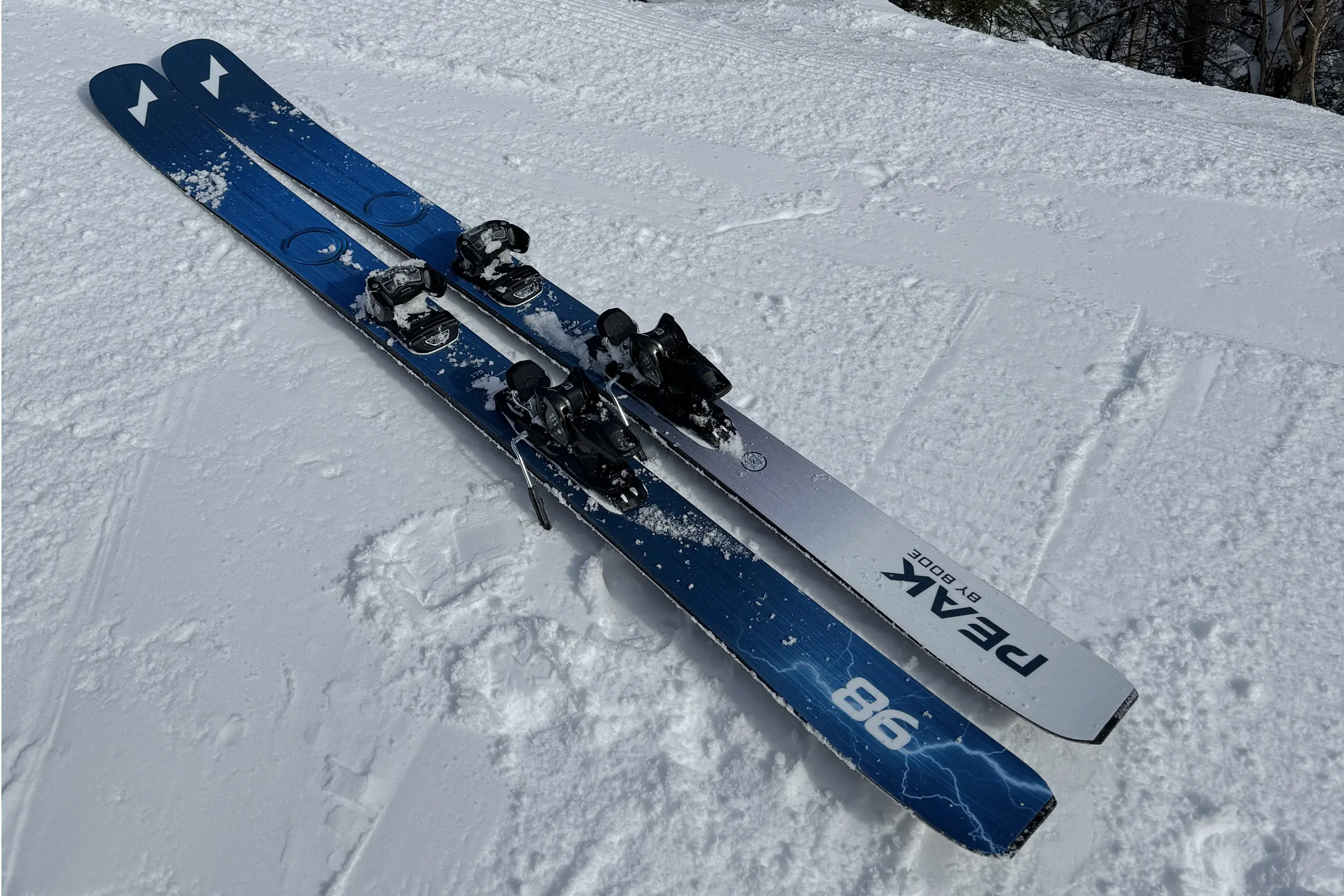



On Refrozen Groomers
When I next skied the Peak 98, Stowe had gotten a few inches of fresh on top of the manmade snow. Hayride, one of my favorite trails, hadn’t been groomed — so it was a sea of frozen waves under a little fluff.
The Peak 98s provided the best experience imaginable in those conditions. The front of the ski flexed around trail features without making me feel like I had to fight. When there was enough snow to wiggle through the woods, the Peaks were easy to turn. And when I popped back onto the groomers and wanted to make big GS swoops, they complied.




In Powder
Then I went to Idaho. It wasn’t clear what the conditions would be. So, I packed the Peaks as well as a pair of 105-underfoot Line Sakana. With a fresh 6 to 8 inches of snow on top of a soft groomed trail at Sun Valley, these skis excelled. Despite not having the extra-wide shovel of some skis, they stayed on top of the snow and didn’t dive or get buried.
While they don’t have the float of a 103, 106, or wider ski, when I left the fluffy woods and skied out on a refrozen groomer, I didn’t miss a beat.
When another foot of snow fell, I switched to powder skis. But one of my travel companions also happened to be on Peak 98s, and he skied the storm — 18 inches of medium-density powder cat skiing at Idaho’s Soldier Mountain.
The ski didn’t auger, and as we dropped lower on the mountain and hit zipper crust, he had a lot more control and confidence than I did. A few days later at Magic Mountain, we had the most snow of the trip. It was a banquet of nearly 20 inches of untracked, lift-served powder.
I hadn’t expected so much snow. So I’d brought the Peaks, not the Sakanas. It was the best day of my ski season. I chased three locals all day long, zipping between aspens and firs, slashing wide open bowls, and popping off little booters hidden everywhere.
Great Off-Piste, Heavy for Backcountry
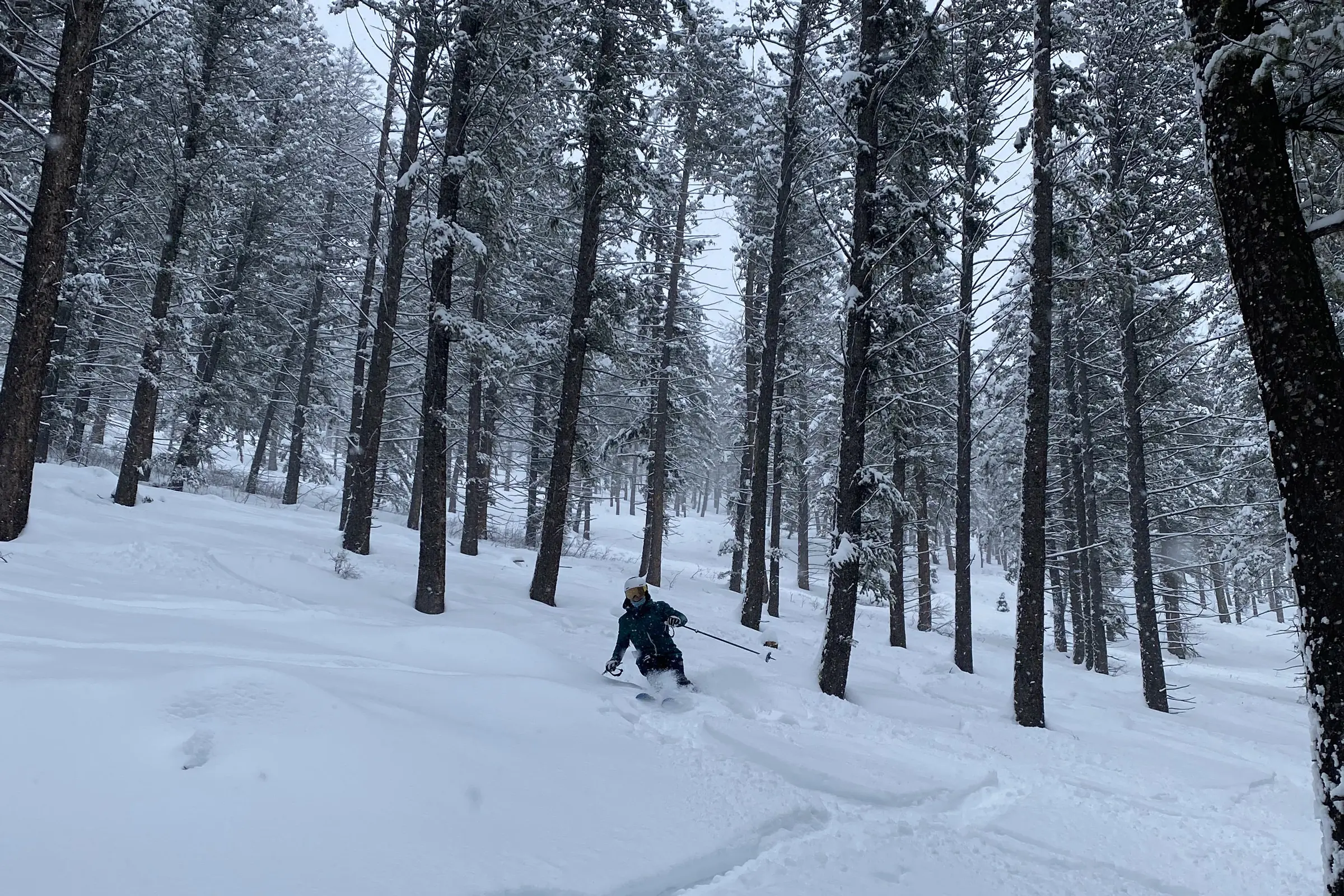



The Peak 98 is heavier than a non-metal construction ski. But it’s not so heavy that they beat me up or tired me out. On the slopes of Idaho’s Soldier Mountain as I alternated between groomed and ungroomed slopes, fresh powder interspersed with sun-affected snow, I opted for the Peak 98s again, not my powder skis.
Again, they proved a capable groomer ski in a shockingly wide variety of conditions.
The ash and metal core contribute to this ski’s predictable performance on the hill. While this ski is made for 50% on piste and 50% off, it’s not designed to be a backcountry ski. Sure, you could mount it with an Atomic Shift binding or a Marker Duke and you’d have a hybrid setup. It would just be very heavy for serious touring.
Peak’s lineup includes the Peak skis in a variety of widths — 78, 88, 98, 104, and 110 cm. All are Bode Miller-designed and have the ash, pawlonia core with two sheets of KeyHole metal.
Peak also sells the Peak 98 and 104 “by Dav” (a.k.a. Chris Davenport). Those skis are made from a paulownia-poplar-isocore, which is extruded closed-cell PVC, between two sheets of metal. It’s lighter than what’s used in the Peak by Bode skis and better suited for backcountry use.
Room for Improvement
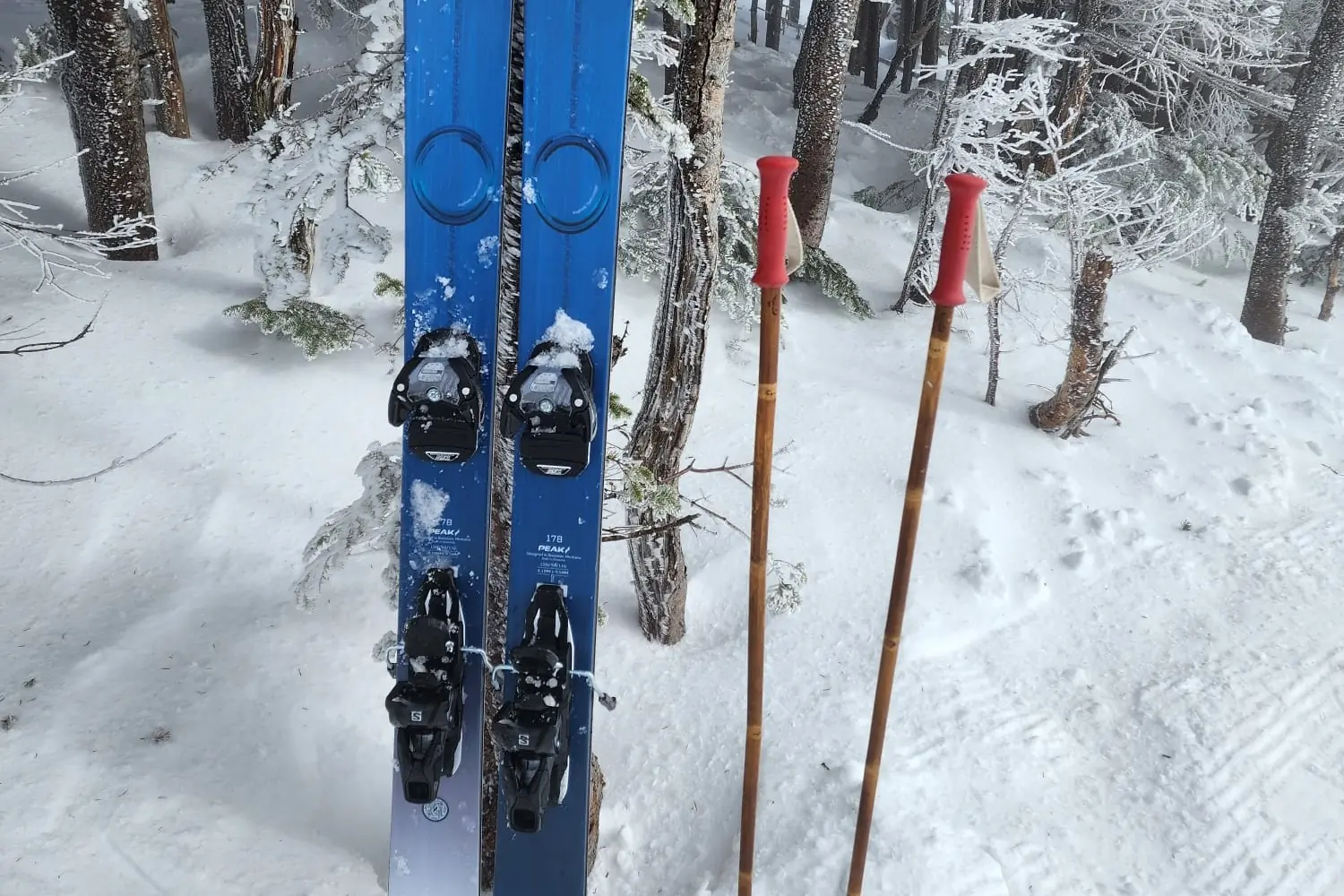



I normally have a laundry list of possible tweaks to a ski that might make it perform better for me. But I don’t have a lot of suggestions for this ski. Sure, if it were lighter I might mount it with a hybrid binding. But Peak sells a ski that’s more suited to that use case. Maybe if the shovel was wider, it would float even better in soft snow. But as designed, the ski was exceptional.
I did chip the top sheet on the edge of one of the skis this season, but I can’t say that was a weakness in the ski. I’ve put the Peak 98s in a ski bag on a plane multiple times, I’ve chucked them in the back of my truck, and I’ve driven around Idaho with them bouncing around in a Home Depot trailer. They haven’t been coddled and they’re holding up.
Peak Ski Peak 98 by Bode: Conclusion
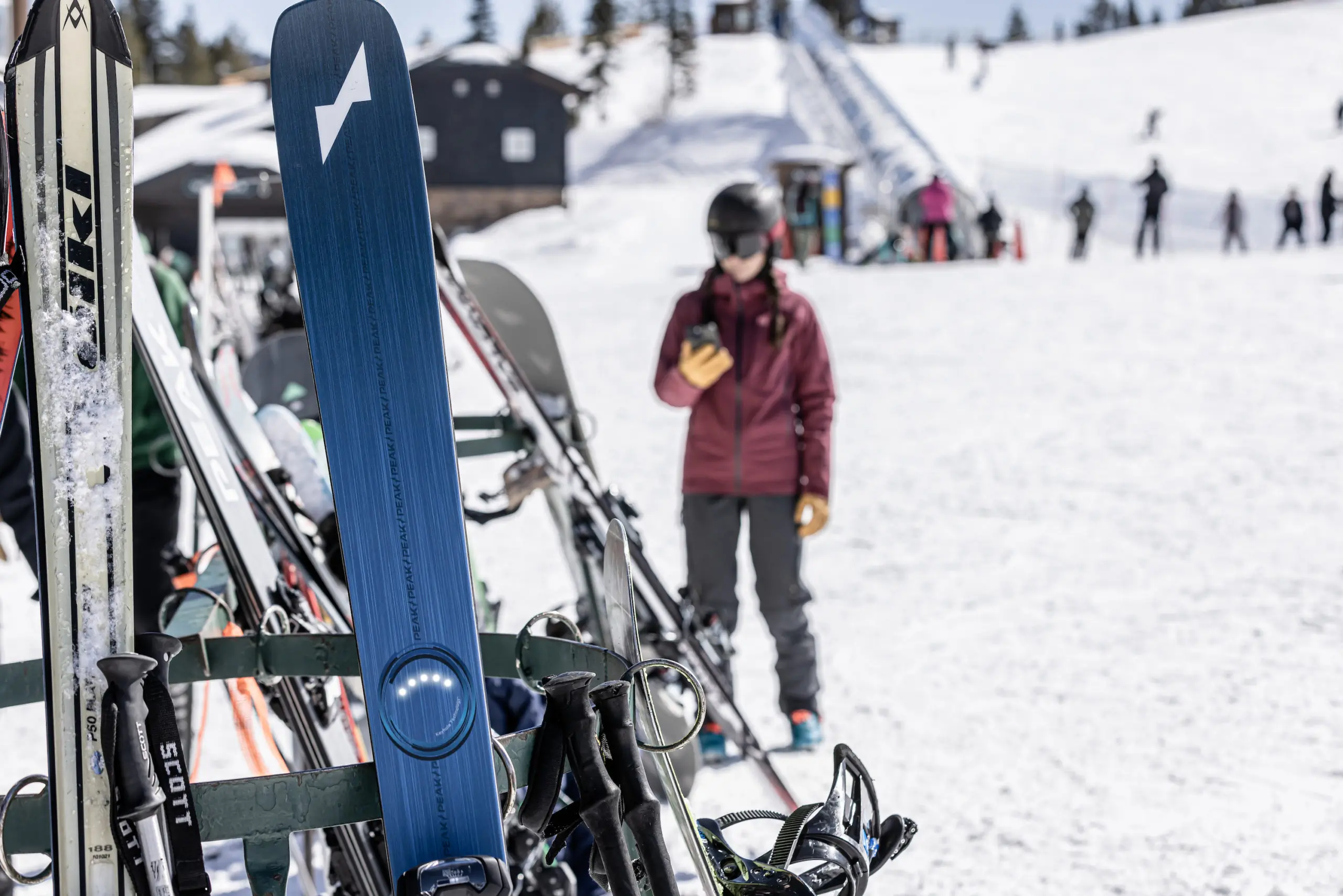



If you’re primarily a deep powder skier, buy a different ski. If you only ski when conditions are chalky to fluffy, there are a lot of skis that will better meet your needs.
But if you’re an intermediate to advanced skier who goes out in all conditions, and you want confidence carving on the most variable slopes, in my opinion, there is no better choice than Peak 98 by Bode. And you don’t need to be an expert to ski it.
The Peak 98 comes in 160cm to 190cm lengths. It meets a lot of skiers’ needs, whether you like to carve down the mountain at a relaxed pace, or if you like to charge.
I also appreciate that the ski is gender-neutral. As a female skier, I didn’t feel like I needed this ski to be softer or to have different graphics for me to have fun on it. And the 98-width was a sweet spot for most conditions.
I opted to travel with these for their capability in so many different conditions. If I’m headed for deep powder, this is not the ski I’ll grab. When I’m not sure what conditions I’ll encounter, so far, the Peak 98 has had my back.
